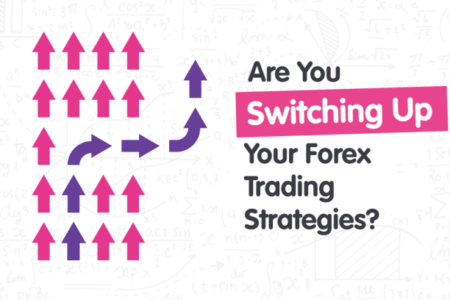If you’ve spent enough time around Forex trading forumsYou may have come across a trader or two who said they made consistent points with just one trading system.
But you’ve also seen others who can’t seem to replicate the OP’s excellent trading performance. In fact, this may often be the case.
Don’t worry; This is not because the OP is selling a get-rich-quick scheme. Well, at least I hope not.
Rather, the OP most likely used his strategy at a fortunate time when the set of rules worked well with the trading environment in which he used it.
Traders usually spend a lot of time adjusting indicators, parameters and trading rules without thinking much about how long they might work.
Take a game of basketball, for example.
Team Blue prepared to take on Team Red by breaking down individual players’ stats and analyzing their regular plays. They allow mistakes but generally expect the odds to tip in their favour.
Beating the Reds means identifying and making adjustments to the games they’re implementing. Not at the end of the quarter, but as soon as possible.
Similarly, the best way to keep Team Red alert is to switch players and strategies once Team Red gets a feel for Team Blue’s plays.
Forex trading has the same principle. If you want to be consistently profitable, you have to be profitable across different trading conditions.
So, how can you be profitable in any trading environment? Here are some tips.
1. Spend as much time as you can studying price action.
Nothing beats the experience. While backtesting will go a long way in indicating the strengthening and weakening of market and indicator correlations, your experience will also be useful in identifying early signs of change in trading conditions.
Will the bulls regain enough control to end the trend? Or did the market catalyst inspire the breakout from narrow range conditions? Has the moving average crossover finally failed to announce a change in trend?
Feel free to use a trading journal to help you remember your notes.
2. Try both discretionary and mechanical trading
While mechanical trading works for a lot of traders, systems work too as long as you use the right tools in the right environment.
This is where discretionary trading comes in. Remember that your profitability depends on how quickly you can adapt to changes in trading conditions.
But since a lot of systems tend to use lagging indicators, you will need your experience and judgment to spot market changes and take advantage of them.
3. Try different trading strategies
Once the change in the trading environment is confirmed, it is important that you quickly change gears and adapt to it. This means that you will always have to be ready with more than one “play” in your playbook.
Testing different timeframes, indicators and trading conditions will help you broaden your playbook.
Most importantly, the (successful) results from the previous tests will increase your confidence to jump to another strategy and prevent countless trading errors related to trading psychology.
4. Be flexible
Just because a strategy has given you points for several days does not mean that it will do so for the next two weeks.
Be ready to switch your strategies as soon as the parameters call.
5. Practice good risk management
Just as basketball players don’t shout out the opposing team’s intended plays, you also won’t know when market conditions will change.
But if you practice good risk management habits – in every trade – you can afford to be stuck with an open position using an outdated strategy while trading conditions change.
Just make sure that you use the right strategies in your next trades!
Remember that forex trading is an ever-changing jungle that cannot be successfully navigated with a single set of tools.
If you want to be consistently profitable, you can’t expect one set of rules to always work in your favor. Be prepared with different strategies and be flexible in using them.
